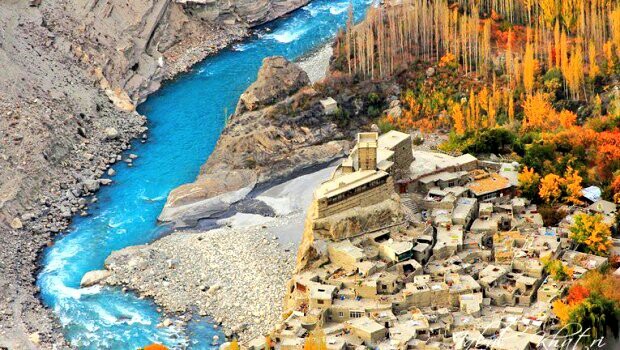A land where the three extravagant mountains of the Himalaya, Karakoram and Hindu-Kush greet each other, the home to rare flora and fauna, beautiful valleys and the dazzling lakes, is Gilgit-Baltistan; yet another eye-catching region of Pakistan and a popular tourist destination. The amiable denizens, celestial landscapes and enthralling cascades make this province a favourite destination for tourists from all across the world. Moreover, the simplicity and harmony of the province is a treat for the mind and soul. The region is known to be surrounded by the highest and greatest number of mountains around the world. Although the area is dry and rugged, as the clouds are blocked by the huge mountains but the labour of the strong and willing local population has even claimed the hard mountains for cultivation resulting in beautiful green orchids of many fruits in the valley. This makes a spectacular contrast in the green fields and ruggedness on the mountains topped with white snow.
Sheosar Lake is a situated in Deosai National Park, in Gilgit-Baltistan province of northern Pakistan. The lake is at an elevation of 4,142 metres (13,589 ft) in the Karakoram-West Tibetan Plateau alpine steppe. Its approximate length is 2.3 kilometres (1.4 mi), width 1.8 kilometres (1.1 mi), and average depth is 40 metres (130 ft).
|
Hunza Valley, a beautiful place to visit, about 3 hrs journey from Gilgit, Northern Areas of Pakistan. If anyone visiting , must see are Baltit Fort, Durbar Hotel and Fishing experience in Hunza River.
The Karakoram Highway or KKH in short, is the greatest wonder of modern Pakistan. It is one of the most spectacular roads in the world connecting Pakistan to China. It twists through three great mountain ranges - the Himalayas, Karakoram and Pamir. KKH passes through the Karakoram Range, which boat 12 of the 30 highest mountains in the world.River indus is a very old capmanion of KKH and old silk rout. The ultimate source of the Indus is in Tibet. The Indus is, by volume, the largest exotic river (one that mainly flows through a country from which it receives no water) in the world.
It's a Heart from an eye.. Shangrila Resort , Skardu Baltistan.
Laila Peak is one of the most beautiful peaks on earth. The Laila peak is located in Hushe Valley of Baltistan, Pakistan. (image:www.visitatp.com)
Beautiful view of Gasherbrum-IV, Karakoram Range, Baltistan, Pakistan.
Trango Tower Location: Skardu Baltistan (Pakistan) The highest rock tower in the world. Height = 22500 ft.
Skardu Cadet College (Snow covered). (via facebook page)
Siachen Glaciers , Gilgit Baltistan of Pakistan.
Pakistan Army Soldiers at Siachen , Gilgit Baltistan of Pakistan.
source: HamariWeb






Comments